
Roots
The very essence of a strand of hair, particularly that which coils and kinks, holds within its structure the whispers of epochs past. It is more than mere protein; it is a living chronicle, a physical manifestation of lineage and a canvas upon which identity has been painted across civilizations. From the oldest human records, hair has stood as a profound marker, signaling one’s place in the cosmic dance of family, community, and the spirit world. Understanding how ancient hair practices communicated identity and heritage requires an intimate communion with this intrinsic language.
Consider the remarkable resilience of textured hair, its helical geometry a marvel of natural engineering. Unlike straight hair, which tends to descend in simple columns, coily strands possess an elliptical cross-section, causing them to twist and turn upon themselves. This unique structure, with its inherent spring and volume, lent itself naturally to sculpting, braiding, and adorning, becoming a deliberate medium for expression.
It was not simply styled; it was shaped with purpose, each twist and tie a deliberate act of inscription, reflecting status, age, or spiritual belief. The earliest evidence of humanity’s reverence for hair comes from ancient African civilizations, where the care and adornment of textured hair were central to daily life and ritual.

Textured Hair Anatomy And Ancestral Understanding
The biological architecture of textured hair, often categorized by its tight curls and coils, dictated many of the practices that arose in ancient societies. Its natural inclination to dryness, given the path oils must travel down the coiling shaft, meant that moisture retention and protective styling were not merely aesthetic choices; they were necessities for healthy hair. This practical understanding, likely gained through generations of observation, informed the use of natural emollients and complex styles designed to safeguard the hair and scalp.
Textured hair, with its distinctive helical structure, was an ancestral canvas for identity and a testament to resilience, shaping practices born from necessity and communal wisdom.
Ancient cultures, though lacking modern scientific classifications, possessed an intuitive grasp of hair types. Their systems were often rooted in cultural observations and the purpose hair served within their social fabric. They recognized the varying degrees of curl, the density, and the volume, associating certain textures with specific tribal lineages or even spiritual aptitudes. The knowledge was oral, passed through skilled hands during communal grooming sessions, weaving practical care with cosmological understanding.
- Shea Butter ❉ Extracted from the nuts of the African shea tree, it has been a cornerstone of traditional African hair care, providing deep moisture and protection against harsh environmental conditions.
- Red Ochre ❉ Applied by the Himba people of Namibia, this mixture with butterfat (and sometimes aromatic resins) served not only for aesthetic adornment but also as a protective shield against the sun and for cleansing.
- Plant Oils ❉ Various indigenous plant oils, including those from baobab and mango seeds, were utilized for their nourishing properties, reflecting an ethnobotanical wisdom centuries old.
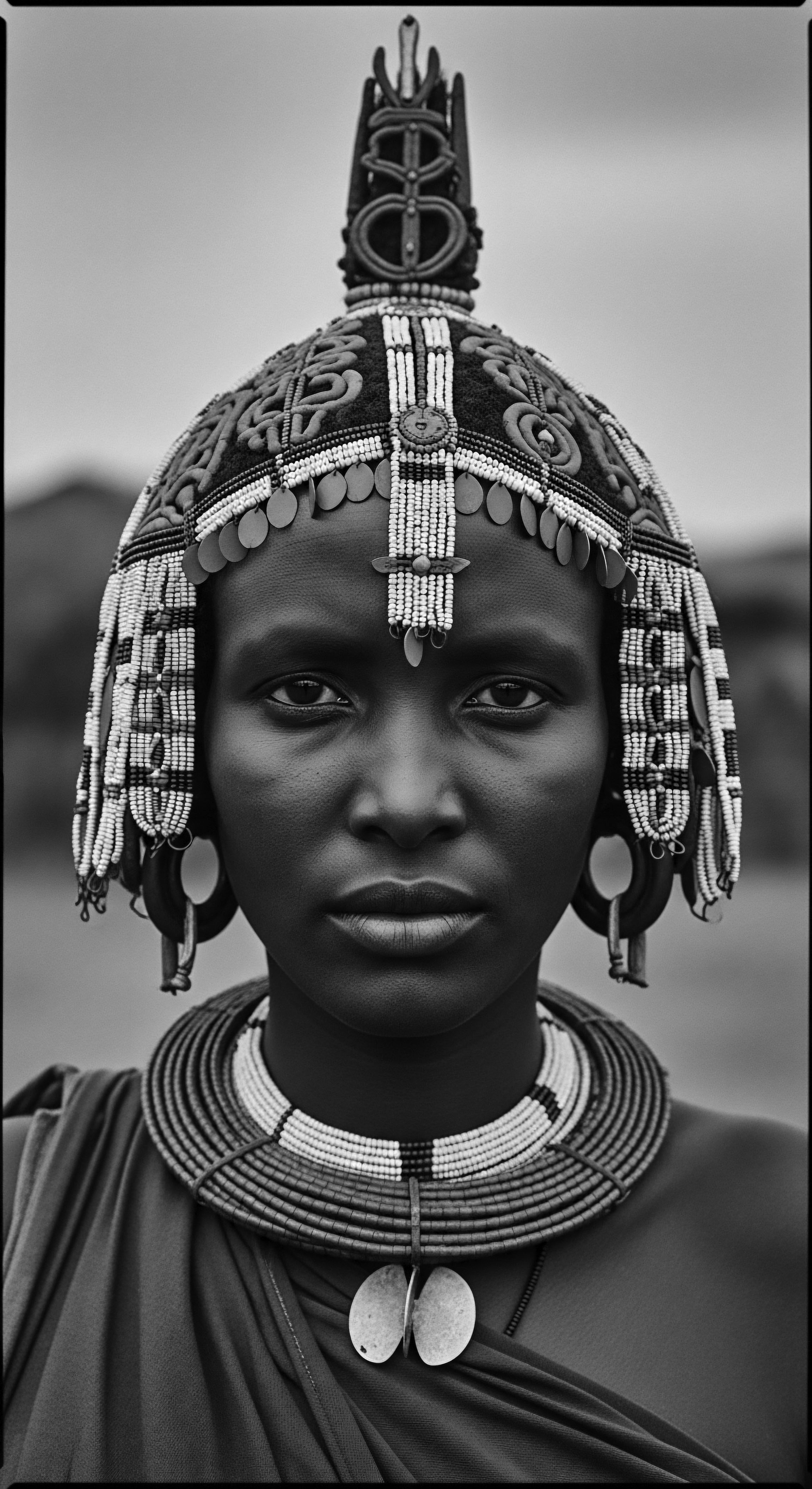
Early Tools And The Whispers Of Heritage
The implements used for hair care in antiquity speak volumes about the societal value placed on hair. Archaeological findings offer tangible proof of sophisticated grooming practices. The oldest surviving hair combs, dating back over 6,000 to 7,000 years, were unearthed in the ancient civilizations of Kush and Kemet (modern-day Sudan and Egypt).
These combs, often carved from wood, bone, or ivory, were far more than simple tools; they were works of art, adorned with symbols of reverence for nature, sometimes even depicting human figures. Their presence in tombs and burial sites further underscores the spiritual and symbolic significance attributed to hair and its care in these societies.
These early combs, with their long teeth designed to navigate the unique texture of coily hair, highlight an understanding of natural hair care that predates colonial narratives. They stood as symbols of status, beauty, and even communal identity. The shared designs and techniques found across different African regions demonstrate a profound cultural exchange and a collective reverence for hair as a vital aspect of self and collective heritage.
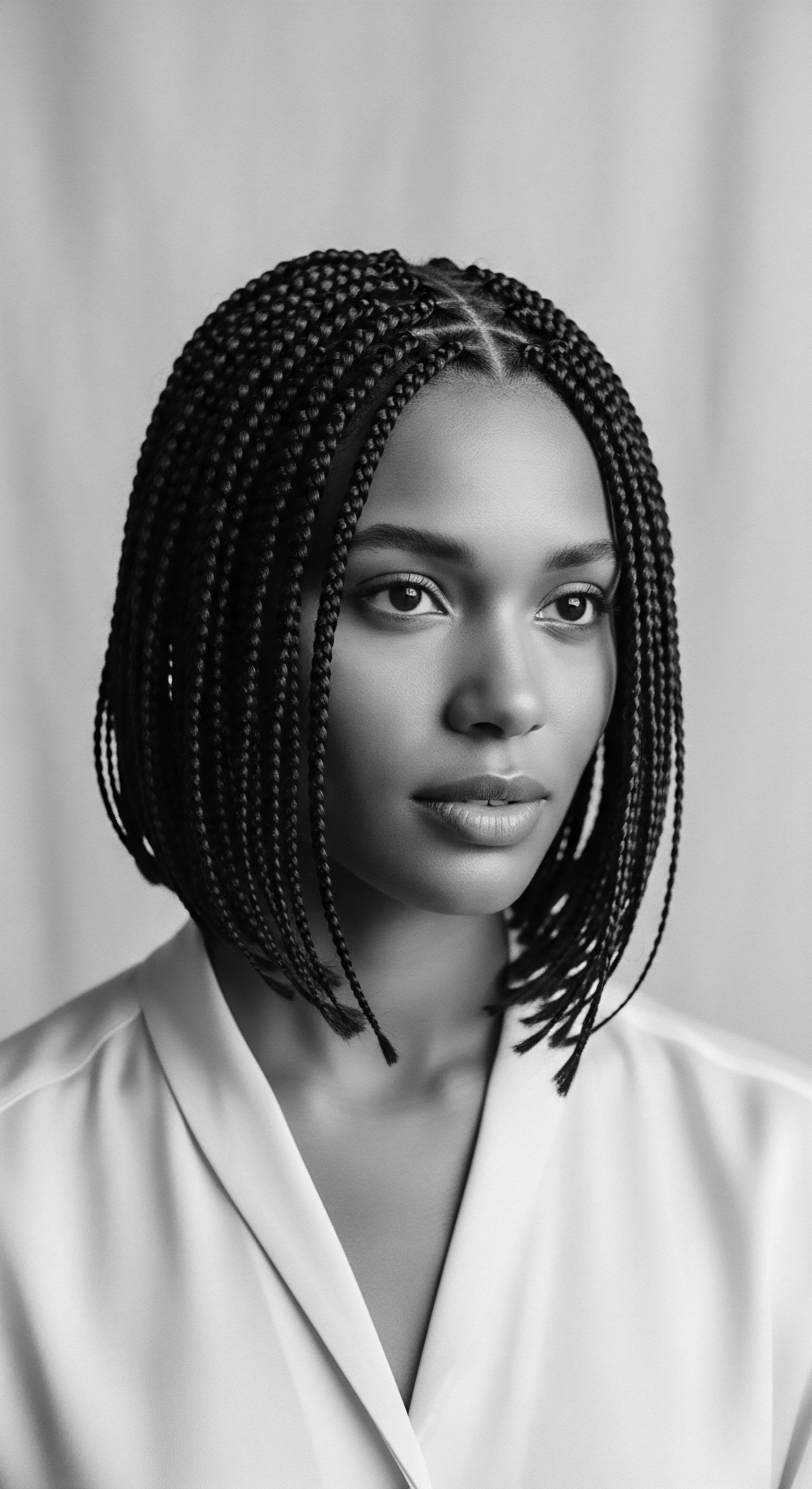
Ritual
The act of styling hair in ancient cultures transcended mere aesthetics, becoming a deeply embedded ritual, a communal gathering, and a powerful language. It was a time when stories were shared, wisdom imparted, and bonds solidified. The tangible expressions of identity and heritage were not merely applied to the hair; they were woven into its very structure through intricate patterns and deliberate adornments. This transformation of hair into a living script allowed individuals and groups to communicate their lineage, social standing, and life experiences to the world without uttering a single word.
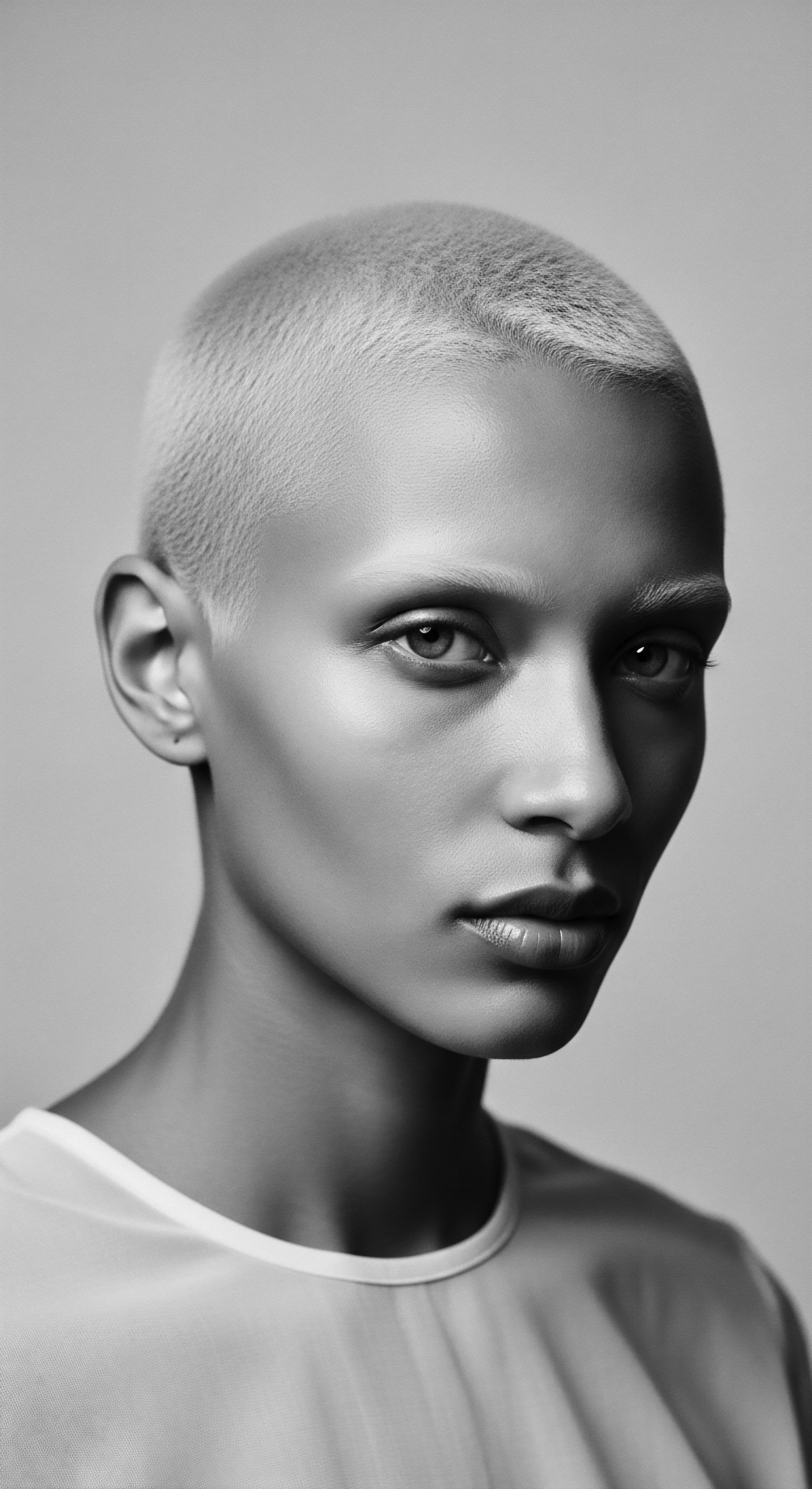
How Did Daily Grooming Become A Language Of Identity And Survival?
Hairdressing in ancient Africa served as a sophisticated system of communication. A hairstyle could reveal an individual’s marital status, age group, tribal affiliation, wealth, or even their readiness for war or a period of mourning. For example, among the Yoruba people of Nigeria, intricate hairstyles held deep spiritual meaning and conveyed community roles. Young women might wear elaborate braids during initiation rites, marking their transition into adulthood.
In polygamous Nigerian households, specific braiding patterns, such as the ‘kohin-sorogun,’ conveyed messages between co-wives, a non-verbal commentary on domestic dynamics. The Fulani people of West Africa, a nomadic ethnic group, are particularly renowned for their distinctive braids, often decorated with beads, cowrie shells, and silver coins, which outwardly displayed wealth, familial connections, and marital status.
The communal nature of hair styling was another cornerstone of its communicative power. These sessions were not solitary acts but deeply social occasions where mothers, sisters, aunts, and friends gathered, strengthening community bonds through shared labor and conversation. It was in these intimate spaces that cultural knowledge, care techniques, and ancestral stories were passed down through generations, ensuring the continuity of heritage. The rhythmic movements of hands braiding hair became a conduit for oral traditions, a living library of communal memory.
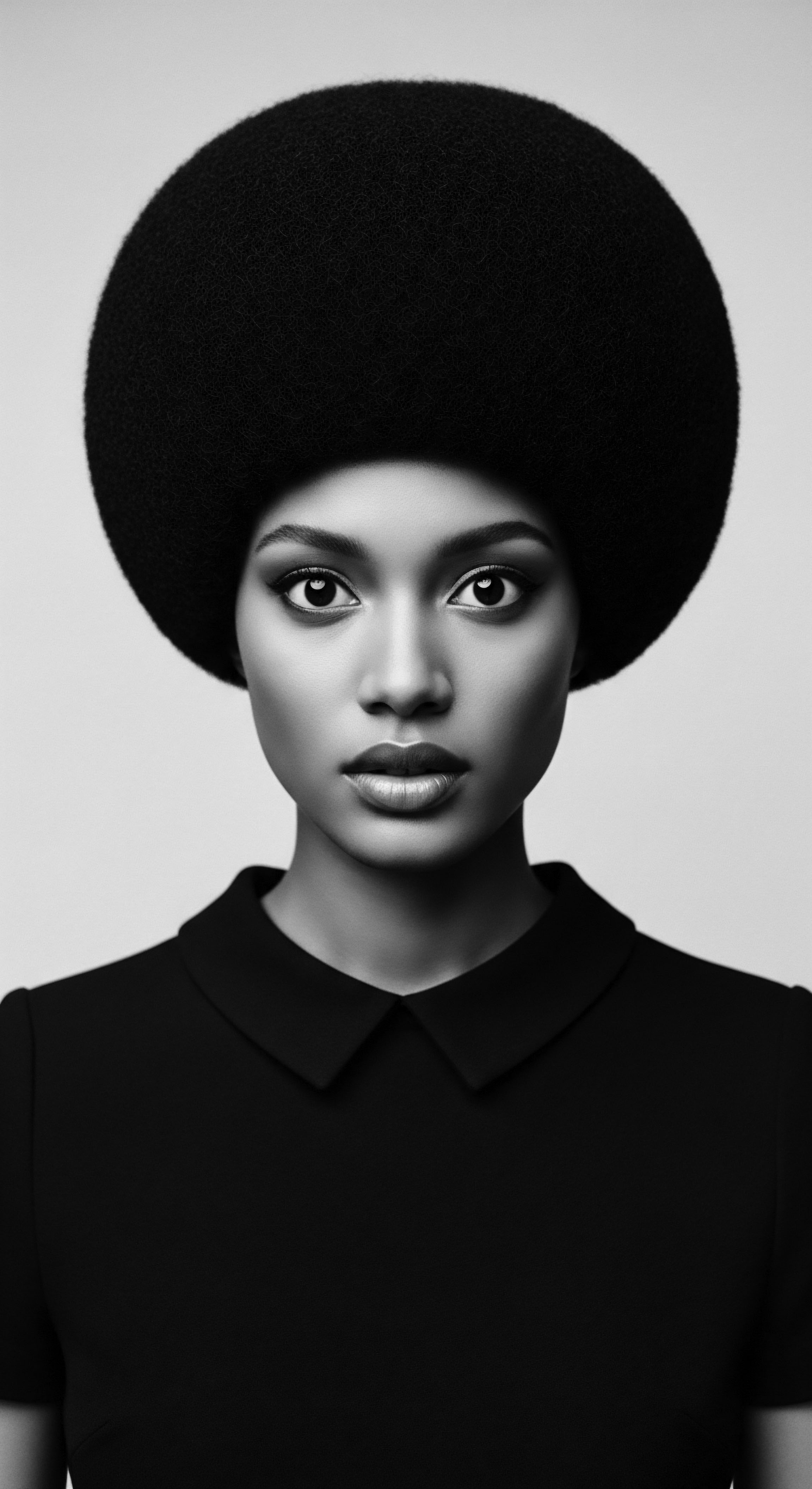
Protective Styling And The Echoes Of Ancestry
Many of the protective hairstyles celebrated today have roots tracing back thousands of years. Cornrows, with their tight braids laid close to the scalp, are depicted in African artifacts and hieroglyphics dating back to 3500 B.C. These styles were not only practical for managing hair during daily activities but also held layers of cultural significance, often representing agriculture, order, and a civilized way of life.
Bantu knots, originating from the Zulu people of South Africa, were symbols of femininity and beauty, alongside strength and unity. These styles provided inherent protection against the elements and minimized manipulation, promoting healthy hair growth, a wisdom understood long before modern trichology.
Ancient hair practices transcended beauty, serving as potent nonverbal communication channels, signaling status, lineage, and communal bonds through intricate, purposeful styling.
A powerful historical instance of hair as a vehicle for communication and survival emerged during the transatlantic slave trade. When enslaved Africans were forcibly transported from their homelands, their heads were often shaved upon arrival, a calculated, dehumanizing act designed to strip them of their identity and connection to their heritage. Yet, in the face of such brutality, hair became a secret weapon of resistance. Enslaved women, with extraordinary ingenuity, braided intricate patterns into their cornrows that served as hidden maps to escape routes.
They also concealed rice seeds and other grains within their braids, smuggling sustenance from their homelands and planting them upon escape, thereby preserving their lives and a piece of their ancestral agricultural heritage. (Byrd & Tharps, 2014, p. 10) This quiet act of defiance stands as a profound testament to the power of textured hair as a repository of culture, cunning, and unyielding spirit.
| Hairstyle/Practice Elaborate Wigs and Braids |
| Cultural Group/Region Ancient Egypt |
| Identity/Heritage Communicated Social status, wealth, religious devotion, divine connection. |
| Hairstyle/Practice Dreadlocked Hair with Red Ochre |
| Cultural Group/Region Himba Tribe (Namibia) |
| Identity/Heritage Communicated Connection to earth and ancestors, life stages, beauty. |
| Hairstyle/Practice Intricate Braids and Patterns |
| Cultural Group/Region Yoruba People (Nigeria) |
| Identity/Heritage Communicated Community roles, spiritual significance, marital status, coming-of-age rites. |
| Hairstyle/Practice Thin Braids with Beads/Cowrie Shells |
| Cultural Group/Region Fulani People (West Africa) |
| Identity/Heritage Communicated Wealth, familial connections, marital status, tribal identity. |
| Hairstyle/Practice Cornrows Concealing Seeds/Maps |
| Cultural Group/Region Enslaved African Communities |
| Identity/Heritage Communicated Resistance, survival, hope for freedom, preservation of heritage. |
| Hairstyle/Practice These examples reflect hair’s enduring role as a visual language, carrying centuries of heritage and defiance. |

Relay
The journey of textured hair practices from ancient lands to contemporary societies represents a continuous relay of ancestral wisdom, adaptation, and affirmation. It is a story not confined to history books but actively lived, evolving with each generation while holding fast to its profound roots. The echoes of traditional care and styling resonate today, proving that the heritage of hair is a dynamic, unfolding narrative, continually shaping identity and cultural expression across the globe.

What Stories Do Ancient Artifacts Whisper About Hair’s Societal Role?
Archaeological evidence and historical records from ancient civilizations across Africa provide compelling insight into the pervasive social and spiritual significance of hair. Depictions from Ancient Egypt, for example, show royalty and elites wearing elaborate wigs crafted from human hair, wool, or plant fibers, often adorned with gold and precious beads. These were direct indicators of social status, wealth, and a connection to the divine.
The Kingdom of Kush, south of Egypt, also valued elaborate hairstyles, with queens (Kandakes) showcasing intricate braids, locs, and ornamental headdresses, symbolizing authority and lineage. Kushite culture, in particular, emphasized natural hair textures, with tightly bound rows and curls reflecting a unique Nubian standard of beauty.
Beyond aesthetic appeal, ancient hair tools themselves serve as powerful artifacts. The earliest afro combs, unearthed in Kush and Kemet, dating back thousands of years, testify to the sophisticated grooming practices and the artistry involved in hair care. These were often carved with symbolic motifs, functioning not merely as tools but as objects carrying spiritual and cultural weight, sometimes buried with their owners. The continuity of these designs and the enduring relevance of such tools highlight a shared heritage that spans millennia and continents.
The resilience of these ancient practices extended through the painful era of the transatlantic slave trade. Despite deliberate attempts to strip enslaved Africans of their cultural identity, including forced hair shaving, traditional braiding techniques persisted. This persistence was not merely about maintaining appearance; it was a defiant act, a way to hold onto a sense of self and community when all else was denied.
As enslaved Africans created new communities in the Caribbean, South America, and the Americas, their hair became a powerful symbol of rebellion and a continuous thread to their African ancestry. The “Black is Beautiful” movement of the 1960s and 1970s, which saw the widespread embrace of the Afro hairstyle, stands as a modern resurgence of this ancestral pride, reclaiming natural texture as a statement of power and identity.

Ancestral Wisdom Validated By Modern Science
The deep knowledge held by ancient practitioners regarding hair care finds surprising validation in modern scientific inquiry. Traditional ingredients used for centuries in African communities for their hair-nourishing properties are now being studied for their pharmacological benefits. For instance, shea butter, a staple in many traditional hair care routines, is recognized for its emollient properties and its ability to seal in moisture, directly supporting the needs of textured hair.
Ethnobotanical studies have begun to explore the efficacy of various African plants used historically for hair treatment and care. Research, for example, explores indigenous plants like baobab and mango for their potential in promoting hair health and growth, connecting traditional applications to scientific understanding of their chemical compounds.
This intersection of ancestral wisdom and contemporary science offers a powerful affirmation of inherited practices. It speaks to a holistic approach to hair care that views hair health as intertwined with overall wellbeing, a concept deeply rooted in ancient African philosophies. This connection underscores the idea that our ancestors were indeed astute observers of nature, developing sophisticated methods through generations of trial and transmission.
The continued practice of communal braiding sessions, particularly among Black and mixed-race communities, reflects this enduring heritage. These gatherings, whether formal or informal, extend beyond the physical act of styling hair; they serve as spaces for intergenerational learning, cultural exchange, and the reaffirmation of identity. The stories told, the techniques shared, and the bonds strengthened in these moments are direct continuations of rituals performed by our ancestors thousands of years ago.
- Afro Comb ❉ Ancient archeological finds from Kush and Kemet (Sudan and Egypt) reveal combs dating back 6,000 to 7,000 years, often carved from wood, bone, or ivory, signaling their sacred and utilitarian value.
- Braiding Needles/Pins ❉ Historically crafted from bone, wood, or metal, these tools facilitated intricate braiding and sectioning techniques that are still employed in various forms today.
- Headrests ❉ Used in various African cultures to preserve elaborate hairstyles during sleep and protect the hair from dust or damage, these objects also carried artistic and symbolic value.
| Aspect of Hair Care Moisture Retention |
| Ancestral Practices (Heritage) Utilized natural oils (shea butter, palm oil) and protective styles to seal in moisture and guard against dryness. |
| Contemporary Relevance/Understanding Modern science highlights the importance of humectants and emollients to prevent transepidermal water loss in textured hair. |
| Aspect of Hair Care Styling Longevity |
| Ancestral Practices (Heritage) Intricate braiding and weaving techniques ensured styles lasted for weeks or months, minimizing daily manipulation. |
| Contemporary Relevance/Understanding Protective styles remain foundational for low-manipulation hair care and preserving length, celebrated as cultural continuity. |
| Aspect of Hair Care Scalp Health |
| Ancestral Practices (Heritage) Application of herbal infusions and natural pastes (like ochre mixes) to soothe and cleanse the scalp. |
| Contemporary Relevance/Understanding Focus on scalp microbiome balance, clarifying shampoos, and soothing ingredients to address common scalp concerns. |
| Aspect of Hair Care The enduring principles of hair care reveal a profound, unbroken chain of ancestral wisdom guiding modern practices. |
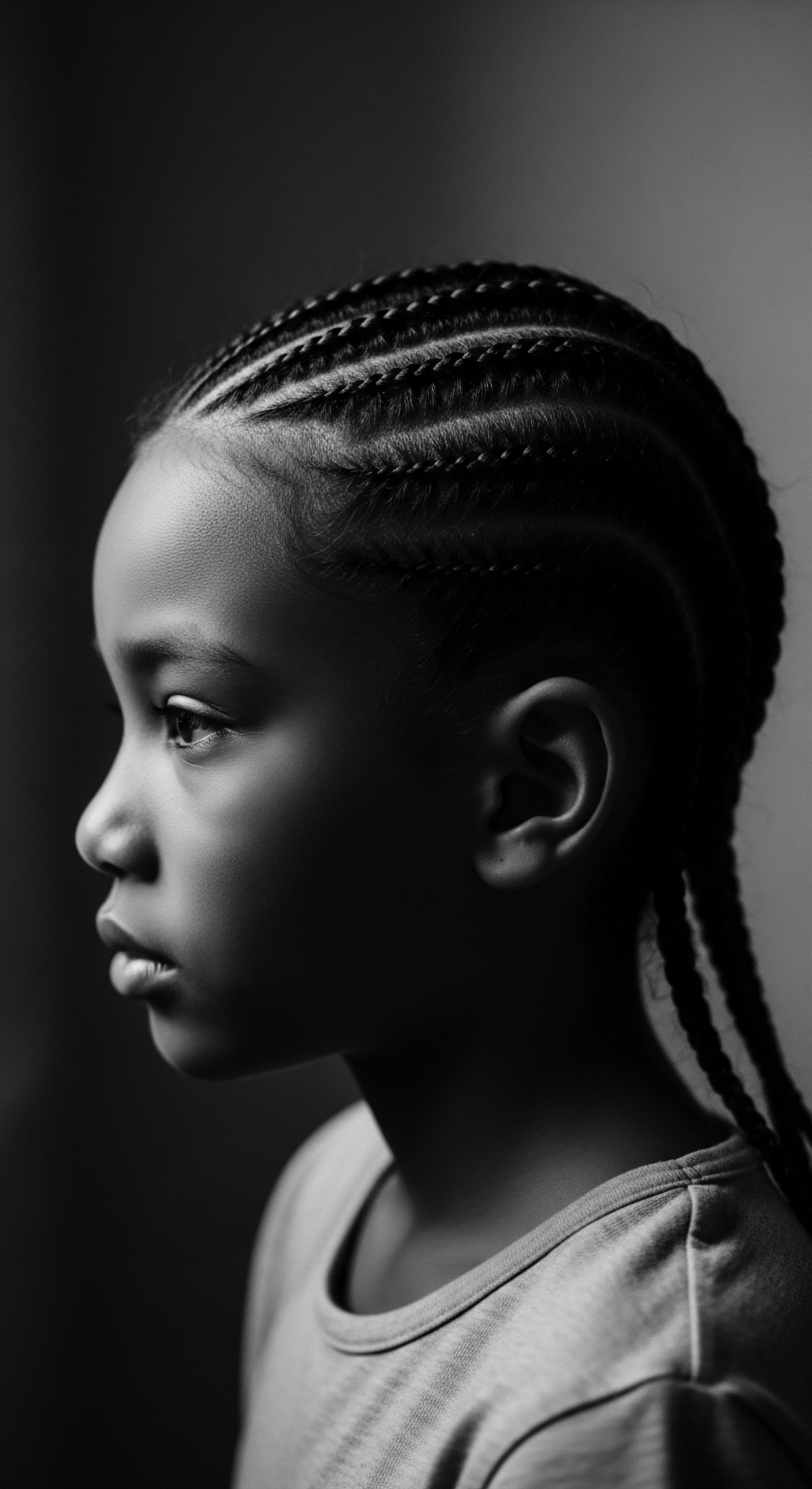
Reflection
The journey through ancient hair practices, particularly within the vast and varied landscape of textured hair heritage, is a profound meditation on the enduring human spirit. Each strand, each curl, each meticulously crafted pattern, speaks not just of individual expression but of a collective memory, a shared history that defies erasure. Hair, in its most elemental form, served as a potent, living language, a testament to identity, community, and the unyielding will to survive and thrive.
From the ceremonial adornments of ancient Egyptian nobility to the coded messages hidden in enslaved women’s cornrows, hair has consistently functioned as a canvas for communication, a repository of cultural meaning, and a banner of resistance. This continuity underscores the truth that textured hair is not merely a physical attribute; it is a profound symbol, a sacred connection to ancestral wisdom, and a vibrant, breathing archive of human experience. The ‘Soul of a Strand’ whispers these stories across generations, reminding us that in understanding the practices of the past, we illuminate the profound heritage that shapes our present and guides our future. Our hair, indeed, is a crown of history, worn with inherited pride.

References
- Byrd, A. D. & Tharps, L. (2014). Hair Story ❉ Untangling the Roots of Black Hair in America. St. Martin’s Griffin.
- Fabusiwa, K. et al. (2024). Bantu knots of the Zulu tribe of South Africa were symbols of femininity and beauty. (Cited in ‘Fulani Tribal Braids Revolution ❉ From Tribal Traditions to Urban Trends in America’)
- Omotos, A. (2018). Hair was very important in ancient African civilizations. Journal of Pan African Studies.
- Owens Patton, T. (2006). Our Own Kind of Beautiful. Black Hair ❉ Texturism, Hair Care, and Identity.
- Sieber, R. & Herreman, F. (2000). Hair in African Art and Culture. Museum for African Art.
